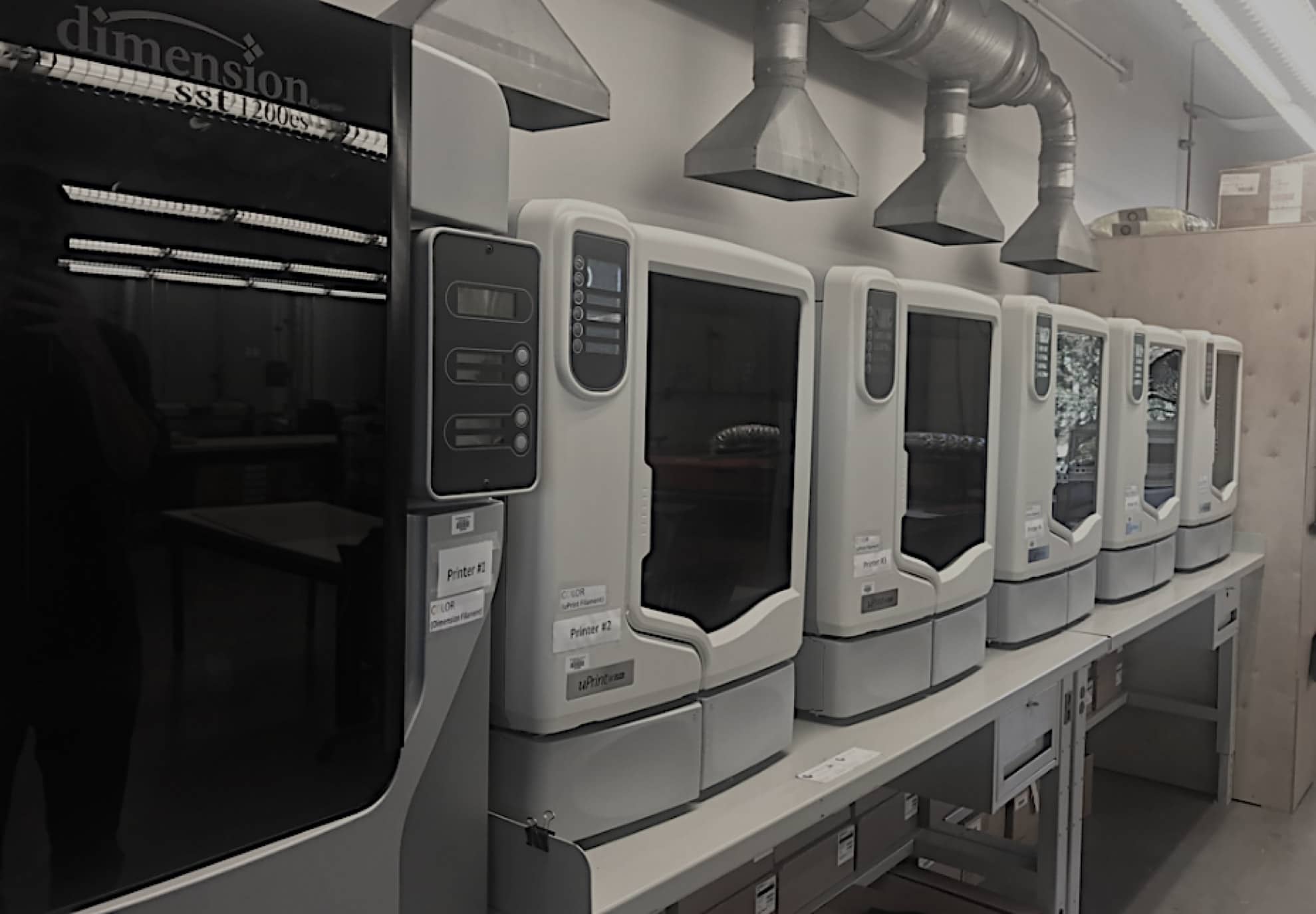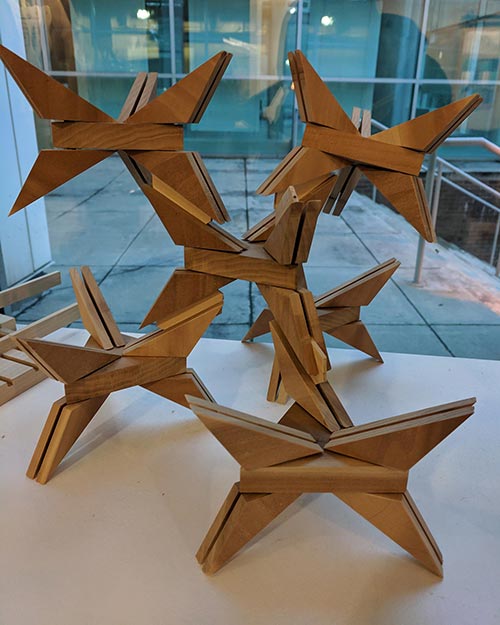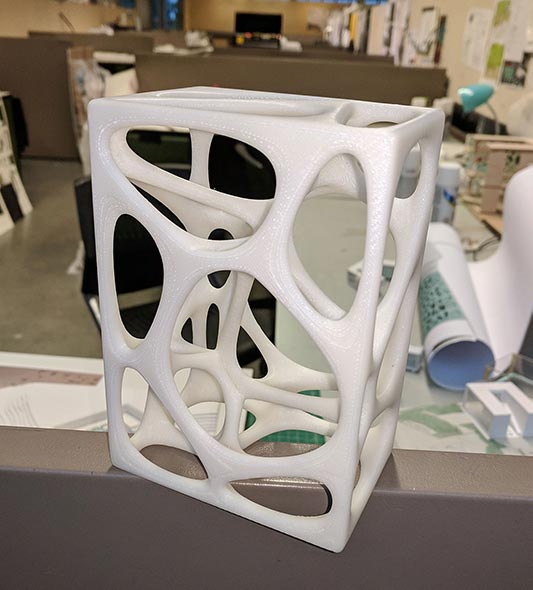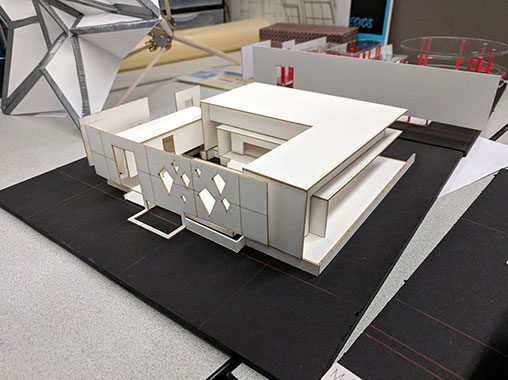Role
Project Lead
Location
Kennesaw, GA / Orlando, FL
Medium
Ethnography
Duration
Nov 2018 (3 weeks)
Overview
Architecture students and professionals have a pletnora of digital tools at their disposal for rendering, modeling, and executing projects. We dove into the field of architecture to test our hypothesis: tools of productivity (rendering and design softwares, laser cutters, etc.) dramatically improve theworkflow of architects, and they will try to use the tools instead of traditional methods (sketch, hand cut / carved model making, etc).
Objective
Create an ethnographic report on a group of people who rely on technology. Follow the steps from Practical Ethnography through recruitment (gathering participants), fieldwork (observations and interviews), analysis (data cards, hypothesis, personas), and reporting. Give a 10 minute presentation to stakeholders and create a well-designed report.
Team Overview
Parker Bomar - Project Lead
Breanne Bracewell - Researcher
Mathew Steinbauer - Observer
My Role
Lead and orginzied team to meet apropriate deadlines
Created IRB forms and Conducted Interviews
Designed / wrote report and executed 10 minute presentation
"I couldn’t do it. I couldn’t do my work without it."
- Professional Interviewee

Hypothesis
Productivity tools and digital softwares dramatically improve the workflow of architect students and professionals, and they will try to use these tools instead of traditional methods.

Hypothetical User

Jordan Goodman
Archtiect Student, 2nd Year
Age: 20
Bio
Jordan is a second year architect student at Kennesaw State and gets most of his work done in a shared workspace setting.
He is a late millennial and grew up with computers
He loves the idea of using software and outside tools for design, because he is comfortable with software in general.
After many classes the past few years in school, he quickly reaches for the computer to execute an assignment or task because he knows it will speed up his work.
Observations
"It seemed that hand sketching served the purpose of quickly and easily trialing things…"

Intro
We completed several participant observations over the span of 2 weeks, in shared workspaces, laser and 3D printing labs. We began by building rapport with our participants, ensuring their comfort level in interacting with us. Our goal was to determine how the students interacted with all of the tools available to them in executing their designs.
Observation Take-aways
As we watched, we noticed how seamlessly the student rotated between hand-sketching and software to mock-up what they sketched, then back to sketching and back to software.
At one point, our participant held their pencil between their fingers as they mocked up their design on the computer -- sketching was so integral to the process, the pencil didn’t leave their grasp.
It seemed that hand sketching served the purpose of quickly and easily trialling things without the constraints that the computer brings when doing things rapidly.
As helpful as the digital design tools seemed on the computer, the physical application of these tools was not seamless.
As we later observed our participant in the laser lab, we noticed their head darting back and forth and the sound of the laser machine attempting and failing to execute the task they had set. Simple things like line weight or color could cause an empty print.
After several attempts, we were told to check back in 18 hours. The shape being created was extremely complex with interconnected holes. Only a master craftsman could carve it out of wood, and never with repeatable precision. Despite initial software mishaps, the tools had surpassed human ability.






Interviews
"As the interviewees continued further into the major,they explained how they used to feel that way, butbecame more fond of the tools as they learned moreabout the design process."
Fresh Perspectives
Direct quotes from our interviews gave us insight into the relationship architects had with tools of productivity and traditional methods.
"The ability to plot designs and documents easily and seamlessly in house is a key part of my process."
“Not having Autocad and Sketchup and Photoshop would be a whole other issue entirely. I wouldn’t be able to render near as quickly or successfully."
"My biggest thing is emphasizing that you need sketching and digital programs, you need both."

"If someone told me I couldn’t sketch anymore, the designs would be terrible. I’m sure it’d be absolute crap.“
"You have to follow the design process and throw away the bad ideas, then put it in the computer.”
"You need to sketch it out and get your ideas on paper, and then you can transfer to a digital software."
Student Interview
Many of our interviewees knew working architects, which influenced the way they chose their tools. During one interview, we asked a 3rd year student about a sketch displayed on her desk. We asked if that was the final iteration of a design or just a draft. She explained that, from her experience interning at an architecture firm, the sketch could potentially be a final iteration.
“Sketches have a different quality,” she stated, tearing a sheet of paper from her notebook.
She drew us a simple building design while describing the myriad of steps creating that design digitally would have entailed.
Tools Used: 3D Printer, Laser, Rhino, AutoCAD
Professional Interview
Our professional interviewee worked in landscape architecture, and described her firm as so small that, “...for one software, we only have one license... and we have to take turns using that computer.” For her, sketching and digital rendering both serve important but distinct purposes.
She shared experiences of spending hours drafting, creating, and printing numerous digital models only for the client to choose a different direction entirely, making her models useless.
Our interview ended with a question: How would your work be affected if you didn’t have these tools? She stated, I couldn't do it. I couldn't do my work without it. Again, it’s the mix. You need to be able to sketch but you also need to be able to use the softwares.”
Tools Used: Revvit, AutoCAD, Photoshop
Results
"My biggest thing is emphasizing that you need sketching and digital programs, you need both…"
- Professional interviewee
Major Take Aways
“Productivity tools” meant using everything at one’s disposal: sketching, modeling, software, or laser cutters, to complete a design with as much quality, and in as little time, as possible.
Sketches and digital tools have to be used together; sketching has its place in drafting and quick ideas, where as digital tools provide accuracy and a way to quickly make small changes.
Software is vital for keeping up with the demands of today’s clients, so long as what is being asked of architects to digitally create does not exceed their knowledge of the software they are using.
The hand skills that laid the foundation for architecture today are utilized and supplemented by the new technology constantly introduced into the field, each one growing in its usefulness and necessity.
Revised User

Victoria Lance
Archtiect Student, 4th Year
Age: 22
Bio
Victoria Lance, a 4th year architect student at Kennesaw State.
She enjoys art and chose architecture as her major so that she can continue that passion while forging a career.
She doesn’t mind learning how to use design software and thinks it is helpful for her work and speed.
But, she understands how important sketching and hand work can be, and makes sure to use a process including both physical and digital so that she can accomplish all her goals.